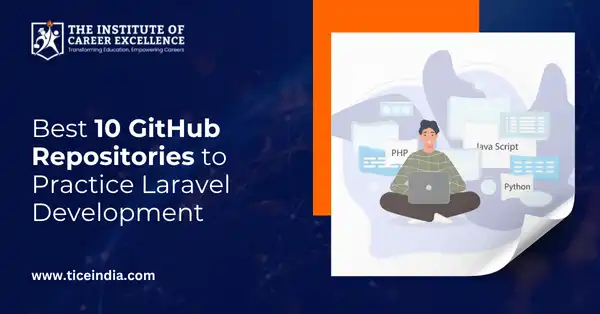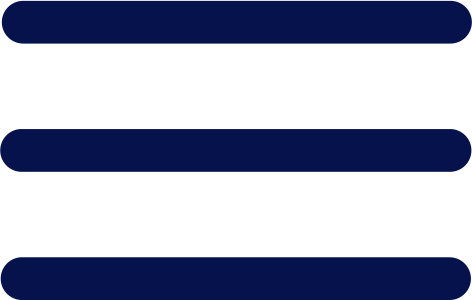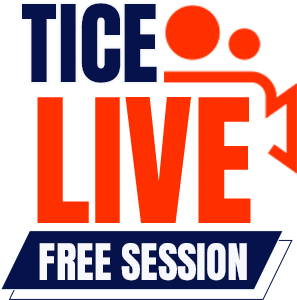
Posted On: May 14, 2025
Best 10 GitHub Repositories to Practice Laravel Development
Diving into Laravel development can be an exciting ride. You learn new ideas, grasp the clean syntax, and imagine the incredible web projects you’ll create. But then you hit a challenge. How do you go from just knowing things to using all that knowledge? Watching video guides and reading walkthroughs helps, but to get good at Laravel, you need to code hands-on.
This is where GitHub steps in to help. The platform offers an endless collection of open-source projects, making it a goldmine for those learning to code with Laravel. Rather than sticking to theory or tutorials, you can explore real-world projects, observe how seasoned developers organize their work, and even jump in to share your own contributions.
This blog covers 10 great GitHub repositories to help you sharpen your Laravel development skills. Whether you're new to it or aiming to boost your knowledge, these repositories provide hands-on practice.
10 Best GitHub Repositories to Practice Laravel Development
These repositories give you the chance to get real-world experience with Laravel:
laravel/laravel
- Description: This is the main repository of the Laravel framework. You won't create a specific app here, but going through the code will show you how the framework is built, its main parts, and the coding practices it follows.
- Key Practice Areas: Learning about how the framework is organized, checking out key parts like routing or the request-response process, and seeing how its coding rules are applied.
- Example Practice Tasks/Ideas: Check out the folder structure, follow the path of a simple request, or study how parts of the system work together.
- Level of Difficulty: Ranges from Beginner to Advanced. It focuses on understanding the framework, not building projects.
alexeymezenin/laravel-best-practices
- Description: This repository doesn't serve as a ready-to-use app. Instead, it offers a treasure trove of tips and example codes showing proper methods to work with Laravel. It talks about different parts of development, like securing code or following a good style.
- Key Practice Areas: Learn how to handle controllers, work with models, interact with databases, strengthen security, and more.
- Example Practice Tasks/Ideas: Go through the sections and practice applying the shared tips in your own projects. Match your current code with the suggestions to improve it.
- Level of Difficulty: Suitable for beginners and those with some experience.
mazimez/laravel-hands-on
- Description: This repository serves as a resource to learn by doing. It includes various branches and tags centered around certain Laravel topics. You can find interactive code snippets and examples to tweak or explore. It provides a more organized way to learn .
- Key Practice Areas: It covers API creation, authentication, Eloquent relationships, and core Laravel features. Instructions are often laid out in steps.
- Example Practice Tasks/Ideas: Check out the README on each branch and experiment by adding new features to the examples provided.
- Level of Difficulty: Suitable for those starting out and those with some experience.
goodnesskay/Laravel-Open-Source-Projects
- Description: This is not focused on one project. Instead, it offers a selected list of open-source Laravel apps sorted based on what they’re used for. It’s a great way to see how real apps are put together using Laravel and learn from their structures.
- Key Practice Areas: Examine different app designs. Learn how packages fit into projects. Find ideas to use in your own work.
- Example Practice Tasks/Ideas: Choose a project you like and check out its code. Try to figure out its core features and how they work.
- Level of Difficulty: Ranges from beginner to advanced depending on the project you pick.
laravel/framework
- Description: This repository narrows its focus on the core Laravel framework instead of the whole laravel/laravel setup. Exploring it helps you dig deeper and grasp how Laravel operates behind the scenes.
- Key Practice Areas: Dive deep to understand the inner workings of the framework. Examine individual components and how they are built.
- Example Practice Tasks/Ideas: Follow the execution process of a particular framework feature like middleware or routing and see how it functions step by step.
- Level of Difficulty: Suitable for developers at intermediate or advanced levels.
laravel/docs
- Description: This is the official repository for Laravel’s documentation. Even though it isn't a hands-on tool, working on the documentation helps you grasp Laravel concepts better by learning how to explain them .
- Key Practice Areas: Learn Laravel’s features in-depth and work alongside the Laravel community as you improve your explaining skills.
- Example Practice Tasks/Ideas: Look at parts of the documentation where something felt unclear to you and make it better. Submit your updates through a pull request.
- Level of Difficulty: Ranges from beginner to advanced depending on what you decide to contribute.
LinkedInLearning/advanced-laravel-4380124
- Description: This repository works as a resource linked to LinkedIn Learning courses about Laravel's more advanced features. It includes code samples and projects that match the lessons, giving a clear way to try out tricky concepts.
- Key Practice Areas: Learn about topics like building advanced Eloquent relationships, making APIs, refining testing techniques, and other course-related skills.
- Example Practice Tasks/Ideas: Use this alongside the course to test out and get hands-on with what you learn. You can expand on the given examples to deepen your understanding.
- Level of Difficulty: This is suited for those with an intermediate or advanced grasp of the subject, depending on the course content.
Repositories under the Laravel organization (e.g., laravel/breeze, laravel/cashier, laravel/sanctum)
- Explanation: These are Laravel’s official packages. They offer ready-to-use features like Breeze for login tools, Cashier for managing subscriptions, and Sanctum for securing APIs. Looking into their code shows how to add specific functions to a Laravel project while sticking to best practices.
- Skills to Focus On: Learning login systems, setting up payments, and creating APIs by applying Laravel’s built-in tools.
- Ideas for Practice: Add a package to a fresh project. Adjust its settings so it works the way you want.
- Difficulty Level: Suitable for those starting out up to those with a bit of experience.
The-Artisan-Lab/LaraQuiz
- Description: This repository has a quiz app created using Laravel. It serves as a good way to practice CRUD operations like Create, Read, Update, and Delete. You can also use it to explore form handling and include user login features in a simple project.
- Key Practice Areas: Learn core Laravel ideas like routing, controllers, models working with database migrations, and handling forms.
- Example Practice Tasks/Ideas: Add more question varieties, create a system to track user scores, or design a management dashboard.
- Level of Difficulty: Beginner-friendly.
Big open-source projects (like MonicaHQ/monica, koel/koel, BookStackApp/BookStack)
- Description: Investigating the codebases of large real-world apps built using Laravel gives valuable knowledge about structuring big projects, connecting various components, and building complex features.
- Key Practice Areas: Grasping how complex architectures work, exploring Laravel’s advanced tools, and observing how packages come together in real-life projects.
- Example Practice Tasks/Ideas: Select a project and dive into its main functions. Check how it handles things like user accounts, storing data, or any specific feature that grabs your interest.
- Level of Difficulty: Best suited for intermediate to advanced learners.
Tips to Practice with These Repositories
To get the most learning out of these GitHub repositories, follow these suggestions.
- Begin by Reading Docs: Check the README file along with any other docs in the repo right away. This helps you understand the context and get basic instructions.
- Clone to Your Machine: Pull the repository code to your local computer. This allows you to explore and interact with the code .
- Take It Slow with Small Goals: Avoid trying to grasp everything at once. Break it down and focus on specific parts or features inside the code.
- Test and Tinker Freely: Try changing things in the code and then run it to see what happens. Learning happens best when you try stuff out on your own.
- Contribute When You Can: If you notice a bug or think of ways to make the project better, you should think about giving back to the open-source project. This helps you learn more and work with others.
- Don't Be Afraid to Ask Questions: If you run into problems, go ahead and ask in the issue tracker or check any related community forums if they're available.
- Understand the "Why": Instead of just reading the code, take the time to think about the reasons behind the choices the developers made.
Exploring More Options
These GitHub repositories are great to practice, but don't forget there are other methods to get better at Laravel development:
- Start Your Own Projects: Think of creative project ideas and build them from the ground up. This lets you take the lead and use all the knowledge you’ve gained so far.
- Help with Other Open-Source Laravel Projects: Find Laravel projects on GitHub that match your interests and add your contributions.
- Join Coding Challenges or Take Online Courses: Websites like Laracasts, Udemy, and Coursera offer courses and coding exercises with clear lessons and hands-on practice tasks.
To build a solid base in web development, students need to understand PHP and frameworks like Laravel. They should explore PHP training and a web development course to grasp the core technologies better. Taking a structured PHP certification course can prove your expertise and help you stand out when applying for jobs.
FAQs
Q1. What does Laravel do?
Laravel is a PHP framework developers use to create both small and large web applications. It helps build everything from basic sites to advanced platforms for businesses.
Q2. Is Laravel for backend or full stack?
Laravel works as a backend framework. It manages server-side tasks, APIs, and databases. But with features like Blade templates, it can also render the frontend, making it a good choice for full-stack work.
Q3. Is Laravel popular?
Yes, Laravel is a well-loved and used PHP framework. Many businesses use it to develop their websites, so there are plenty of job options for those experienced in Laravel.
Conclusion
To master Laravel development, consistent practice is essential. GitHub offers a great platform with projects to explore and contribute to. Working on the repositories mentioned earlier lets you gain practical experience and grow your knowledge of Laravel while building a solid portfolio. Instead of reading about Laravel, jump into these projects. Check them out, experiment, and start building your skills to become an expert Laravel developer!
Tags
Latest Posts
-

Best Certification Courses After 12th for a Career in IT
-

What is Off-Page SEO Optimization? Complete Guide to Building Authority and Rankings
-

What is On-Page SEO? Techniques, Factors, Elements
-

10 Best SEO Keyword Research Tools in 2025 (Free & Paid)
-

All Types of Keywords in SEO With Examples (2025 Guide)
Similar Posts
-

What is Off-Page SEO Optimization? Complete Guide to Building Authority and Rankings
-

What is On-Page SEO? Techniques, Factors, Elements
-

10 Best SEO Keyword Research Tools in 2025 (Free & Paid)
-

All Types of Keywords in SEO With Examples (2025 Guide)
-

How to Learn SEO in 2025: Step-by-Step Guide for Beginners



